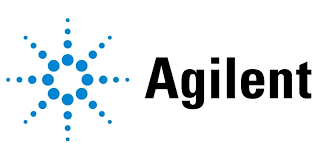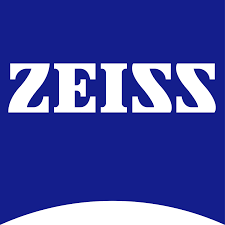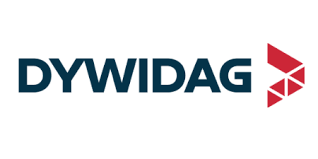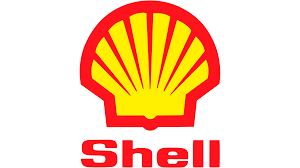Digital Printing Market Report
Published Date: 15 December 2025 | Report Code: digital-printing
Digital Printing Market Size, Share, Industry Trends and Forecast to 2033
This report provides a comprehensive analysis of the Digital Printing market, covering key insights into market size, growth forecasts, regional trends, and competitive landscape from 2023 to 2033.
| Metric | Value |
|---|---|
| Study Period | 2023 - 2033 |
| 2023 Market Size | $34.90 Billion |
| CAGR (2023-2033) | 5.6% |
| 2033 Market Size | $60.95 Billion |
| Top Companies | HP Inc., Canon Inc., Xerox Corporation, Ricoh Company, Ltd., Epson Corporation |
| Last Modified Date | 15 December 2025 |
Digital Printing Market Report (2023 - 2033)
Digital Printing Market Overview
Customize Digital Printing Market Report market research report
- ✔ Get in-depth analysis of Digital Printing market size, growth, and forecasts.
- ✔ Understand Digital Printing's regional dynamics and industry-specific trends.
- ✔ Identify potential applications, end-user demand, and growth segments in Digital Printing
What is the Market Size & CAGR of Digital Printing market in 2023?
Digital Printing Industry Analysis
Digital Printing Market Segmentation and Scope
Tell us your focus area and get a customized research report.
Digital Printing Market Analysis Report by Region
Europe Digital Printing Market Report:
Europe's market is expected to grow significantly from $10.82 billion in 2023 to $18.90 billion by 2033, spurred by demand for eco-friendly printing solutions and innovative packaging requirements as businesses strive to maintain sustainability.Asia Pacific Digital Printing Market Report:
In the Asia Pacific region, the Digital Printing market is expected to grow from $6.90 billion in 2023 to $12.05 billion by 2033. This growth is driven by booming manufacturing sectors and rising disposable incomes, which increase demand for personalized and packaging printing solutions.North America Digital Printing Market Report:
North America leads the Digital Printing market with a projected growth from $11.31 billion in 2023 to $19.75 billion in 2033. This region benefits from advanced technology adoption and a strong demand for high-quality prints in various applications, including packaging and textiles.South America Digital Printing Market Report:
The South American Digital Printing market is projected to expand from $2.82 billion in 2023 to $4.92 billion by 2033. Growing urban populations and increasing retail and packaging industries are creating new opportunities for digital printing providers.Middle East & Africa Digital Printing Market Report:
In the Middle East and Africa, the market is set to rise from $3.05 billion in 2023 to $5.33 billion by 2033, influenced by ongoing infrastructure improvements and a growing focus on digital marketing strategies.Tell us your focus area and get a customized research report.
Digital Printing Market Analysis By Product
Global Digital Printing Market, By Product Market Analysis (2023 - 2033)
In the Digital Printing market, inkjet printers accounted for $23.05 billion in 2023, projected to grow to $40.26 billion by 2033, representing 66.05% market share. Laser printers followed, with a market size of $8.36 billion in 2023, expected to rise to $14.59 billion by 2033, holding a 23.94% share. Digital textile printers are also expanding from $3.49 billion to $6.10 billion, capturing growing interest in textiles applications.
Digital Printing Market Analysis By Application
Global Digital Printing Market, By Application Market Analysis (2023 - 2033)
The application of digital printing spans across various sectors, with packaging holding the dominance of the market at $18.64 billion in 2023, forecasted to reach $32.56 billion by 2033, representing 53.42% market share. Retail applications are similarly significant, followed by educational, healthcare, and manufacturing sectors which are developing niches in digital printing.
Digital Printing Market Analysis By Technology
Global Digital Printing Market, By Technology Market Analysis (2023 - 2033)
Digital Printing technology is primarily divided into inkjet and laser technologies. Inkjet technology currently leads with a market size of $23.05 billion in 2023, projected to reach $40.26 billion by 2033, reflecting a steady preference for this technology due to its versatility. Laser technology also maintains a strong position, expected to grow from $8.36 billion to $14.59 billion within the same period.
Digital Printing Market Analysis By End User
Global Digital Printing Market, By End-User Market Analysis (2023 - 2033)
Key end-users of digital printing include the packaging, manufacturing, and retail sectors, which collectively account for a significant portion of the market. Packaging alone is projected to grow from $18.64 billion in 2023 to $32.56 billion by 2033, indicating a heavy reliance on digital print solutions for branding and customization.
Digital Printing Market Trends and Future Forecast
Tell us your focus area and get a customized research report.
Global Market Leaders and Top Companies in Digital Printing Industry
HP Inc.:
HP Inc. is a key player in the digital printing market, offering a large range of inkjet and laser printers that cater to both consumer and commercial needs. The company's dedication to innovation and sustainability makes it one of the market leaders.Canon Inc.:
Canon is known for its acclaimed imaging and printing solutions and continually invests in research to advance digital printing technologies. The firm focuses on producing high-quality printing devices for businesses across various sectors.Xerox Corporation:
A pioneer in document management and printing technology, Xerox provides advanced printing solutions designed for corporate and commercial applications. They lead in the laser printing segment and are expanding their portfolio with innovative digital technologies.Ricoh Company, Ltd.:
Ricoh specializes in office solutions and digital printing technologies, helping businesses enhance their operational efficiency. Their commitment to digital transition and innovative printing solutions propels them among the global leaders.Epson Corporation:
Known for its high-quality inkjet printers, Epson leads in the digital textile printing market, providing advanced solutions that promote sustainability and digital customization.We're grateful to work with incredible clients.









FAQs
What is the market size of digital Printing?
The global digital printing market is projected to reach $34.9 billion by 2033, growing at a CAGR of 5.6%. This growth is fueled by advancements in printing technology and expanding applications across various industries.
What are the key market players or companies in this digital Printing industry?
Key players in the digital printing market include major companies like HP Inc., Canon Inc., Ricoh Company, and Xerox Corporation, which drive innovation and market expansion through cutting-edge technology and customer-centric solutions.
What are the primary factors driving the growth in the digital printing industry?
Growth in the digital printing industry is driven by increasing demand for customized printing solutions, advancements in printing technology, and the rise of e-commerce, necessitating faster and more efficient printing methods.
Which region is the fastest Growing in the digital printing?
The fastest-growing region in the digital printing market is North America, projected to reach $19.75 billion by 2033, followed closely by Europe, expected to grow to $18.90 billion, driven by technological advancements and increased demand.
Does ConsaInsights provide customized market report data for the digital printing industry?
Yes, ConsaInsights offers customized market report data tailored to the digital printing industry, addressing specific client needs and offering insights that align with their strategic goals and market interests.
What deliverables can I expect from this digital printing market research project?
Deliverables from the digital printing market research project include comprehensive market reports, competitor analysis, trend forecasts, and insights on regional and segment performance, providing valuable information for strategic decision-making.
What are the market trends of digital printing?
Current market trends in digital printing include a shift towards eco-friendly printing solutions, the integration of AI for improved efficiency, and increased demand for short-run printing, catering to personalized consumer preferences.
